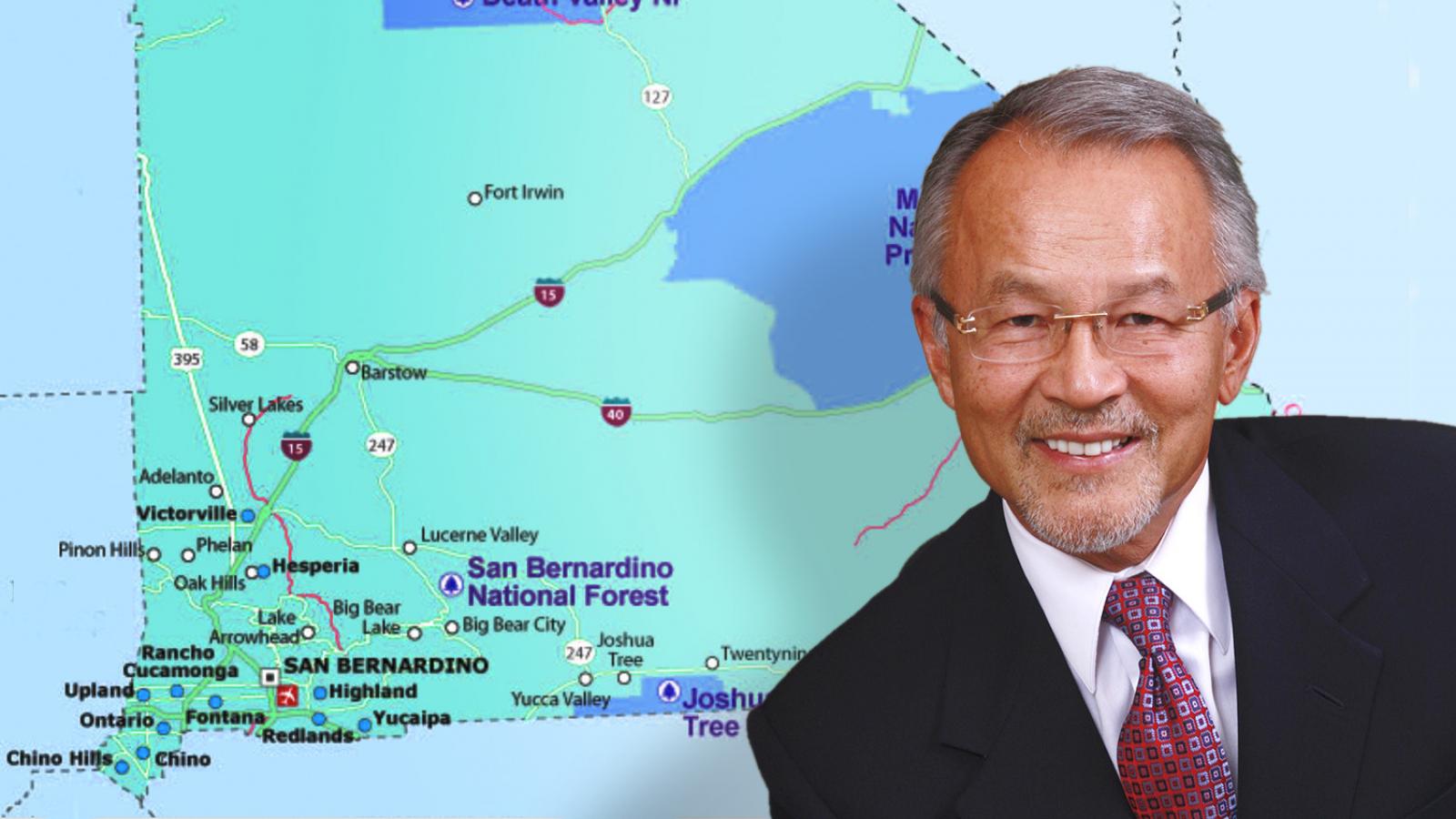Dr. Michael Sequeira ’73 sounded remarkably upbeat for a man who was about to take on the responsibility of being the public health officer for the county that encompasses more square miles than any other in the United States. San Bernardino County, home to more than 2 million people, spreads from Montclair to the Colorado River and is seeing a dramatic resurgence of COVID-19. Its total number of reported cases is second only to Los Angeles among California counties. As of early December, the state COVID-19 dashboard showed more than 90,000 cases in the county since the pandemic began, with 1,100 deaths.
“The enormity of the challenge never turned me off. I respond more to need,” says Sequeira. “I really do think we have everything together to be able to pull ourselves through it. We need consistent, good leadership and communication. We need organization and everything we’ve got in place at this time—testing, education, outreach—and vaccination, of course. I’m going to give it my best.”
His first day on the job was Nov. 23. Sequeira expected to get his county employee badge and parking pass and then jump right into an update on plans for the pandemic vaccination program. Already, health officers from counties across the state are organizing response to the anticipated FDA emergency use authorization (EUA) for distribution of one or more COVID-19 vaccines. First out of the gate in requesting an EUA are Pfizer and Moderna, with AstraZeneca expected to be not far behind in what may be the biggest vaccine race in history.
The logistics of administering vaccines to millions of people would be daunting under any circumstances. But “the biggest challenge is re-cultivating the trust of the public,” says Sequeira, citing the political quagmire that pandemic response has become. “The public has lost confidence in what they are told. The biggest job we have is education and really bringing science and evidence-based medications and remedies to this pandemic.”
The San Bernardino County Board of Supervisors appointed Sequeira as the county’s public health officer on Nov. 17 following a nationwide search. Sequeira says he was encouraged to apply by people he had worked with during more than 30 years in medical leadership. His clinical experience is in emergency medicine, and he has served as president of the San Bernardino County Medical Society and as a member of the board of trustees of the California Medical Association. He has also been a member of the steering committee of the Inland Empire Opioid Crisis Coalition.
Sequeira says he admires the Board of Supervisors for its declaration that racial disparities are a public health crisis. Black residents, for example, have been hard-hit by COVID-19, and yet, Sequeira notes, only about 28% of that population right now say they will take a vaccine. “We have to earn their trust back,” he says.
Organizing the herculean task of distributing and administering vaccines—Pfizer’s, for example, must be stored at an ultra-cold temperature—is not the only challenge waiting for Sequeira and his 39-member team, one that is growing as personnel for testing and contact tracing are added. During the pandemic, “we’ve lost a lot of ground in preventive care,” Sequeira says. “People don’t want to go in for routine mammograms or colonoscopies or doctor visits.”
Sequeira came to the U.S. at the age of 4 from Macau, near Hong Kong. His high school football coach recommended him to the coach at Pomona, and Sequeira was offered a full scholarship. He graduated in 1973, then enrolled in medical school at the University of California, San Diego.
“I loved the time at Pomona,” he says. He remembers walking across campus from the library at 2 a.m. and seeing 80% of the lights still shining from residence hall windows. “I thought, ‘Everyone else is studying so hard, too!’ It changed my life, being at Pomona College and being a Sagehen.”
Sequeira still lives in Claremont and, until the COVID-19 disruption, enjoyed riding his bicycle through the colleges and attending concerts and alumni lectures. He also helped Claremont students organize an emergency response team and opioid education before the pandemic necessitated campus closure.
The man who posted a profile photo on his Facebook page wearing a stylish gray mask (Sequeira prefers ones with a filter and a nose piece so his glasses don’t fog up) understands the pandemic fatigue that is making compliance with health guidelines and regulations increasingly difficult to achieve. For people “hit with this type of stress and anxiety, you have to sow hope,” he says. “We’re going to get through it.”
Asked for recommendations about things to do now while we wait for COVID-19 vaccination campaigns to begin, Sequeira says, “Thing one, two and three is to wear a mask.” He explains that masks not only help prevent person-to-person spread, but can reduce the amount of virus an individual might breathe in. The particles might be “small enough that your body starts to produce antibodies and it is not overwhelmed,” he says. He cites a study of two cruise ships. One ship’s passengers did not wear masks and suffered a large number of infections. Another received an airdrop of masks and wearing them was strictly enforced. “Very few got sick,” Sequeira remarks, and many were asymptomatic but developed antibodies to the virus.
“Wearing masks helps other people,” Sequeira concludes, “and yourself.”
